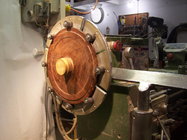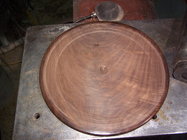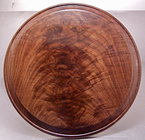Odie
Panning for Montana gold, with Betsy, the mule!
For many years, I've been taking bowl blocks that have <14% MC, and finish turning them in one operation. This is very successfully done, especially if one pursues basic shapes. However, the degree of warp directly effects any successfully sculpted fine details.....the less warp there is, the better those fine details will present. Now, for the past 5 or so years, I've been twice turning everything.....even those with a very low 10% or 12% MC. I've found that low MC roughed bowls will still lose a small amount of weight during the seasoning process, and the overall time element for these bowls over their higher MC counterparts prior to stabilization, is significantly less because of it.
I can't say for certain if this is true, but it seems to me that those bowls with low MC, when twice turned, will warp less in the second turn than if I had finish turned them in one sitting. For someone like myself, who specializes in many turned details in my bowls, this is a great advantage. Even if the warp is less by a very small percentage, it's a great benefit, as well as a preference, when considering these desired multiple details.
There is nothing scientific about my conclusions here, but I'm interested to know if anyone else has come to the same conclusions that I have......?
-o-
I can't say for certain if this is true, but it seems to me that those bowls with low MC, when twice turned, will warp less in the second turn than if I had finish turned them in one sitting. For someone like myself, who specializes in many turned details in my bowls, this is a great advantage. Even if the warp is less by a very small percentage, it's a great benefit, as well as a preference, when considering these desired multiple details.
There is nothing scientific about my conclusions here, but I'm interested to know if anyone else has come to the same conclusions that I have......?
-o-
Last edited:



